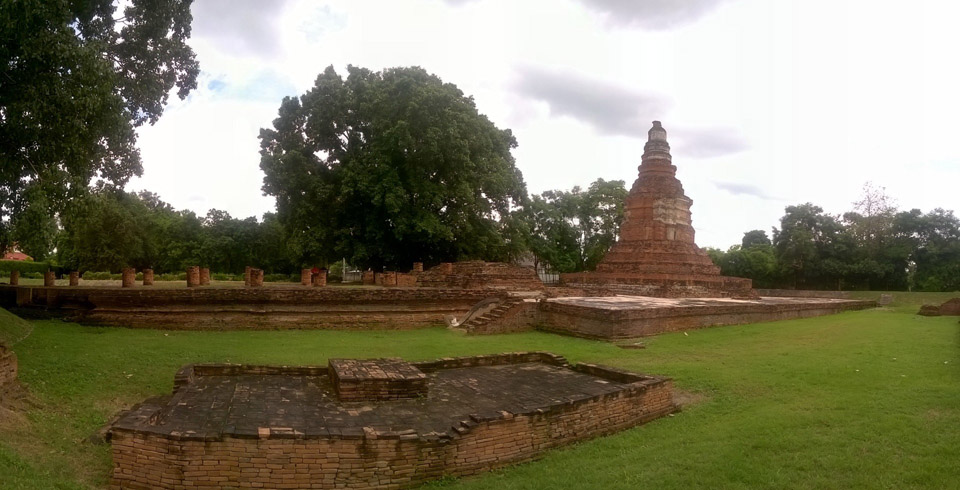E Khang Temple
- Veng KhumKam rd., Nong Hoi, Muang DistrictChiangmai 50000
- 053-140-322
-
- Every Day 07:00-17:00
- https://www.facebook.com/WiangkumkamInformationCen...
- #temple #wat #ruin #wiang kum kan #ancient remains
-
GPS : 18.7498496, 98.9992520 (Open Google Map) | Turn on your location
History
There is no historical evidence that accounts for the origin of Wat E-Khang. However, an enormous scale of constructions, including both viharn (main hall) and the main stupa suggests that it must be one of the most important temples of the city. Considering its location, which is in the heart of Wiang Kum Kam, it is possible that Wat E-Khang might be the great ‘reliquary’ of the city built in accordance with the traditional Buddhist beliefs. The name ‘E-Khang’, which literally means ‘leaf monkey’, is given to this temple as they are dwellers that occupy this forested area for a while.
Location
Wat E-Khang is located 250 metres away to the east from Wat Pu Pia. The temple is registered ‘deserted’ by the Department of Religious Affairs. It was forested and surrounded by private properties, longan orchards and residential areas. The archaeological remains had been left in ruins and vegetated long before the excavation in 1985.
Temple layout and architecture
The temple faces the old course of River Ping (north). The scale of temple component, particularly viharn (main hall), is enormous compared to other temples in Wiang Kum Kam . Archaeological evidence shows that the viharn of Wat E-Khang is a plastered masonry building being placed on series of raised bases. The hall might look like a pavilion (no wall) when it was in use. The 1985 excavation also revealed other constructions, including the octagonal surrounding stupa and other unidentified masonry building.
The central stupa is a round-based, bell-shaped stupa on a raised indented platform, which is typical of Lanna architecture. However, the components closer to the finial had already collapsed during or after desertion.
REF wiangkumkam.com
